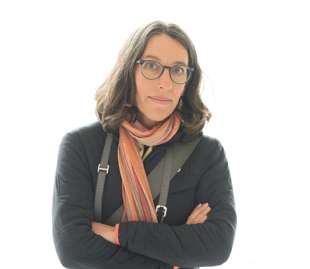

ANIMAFEST PRO | ANIMAFEST SCANNER XII | PANEL 3: ACHIEVEMENTS OF THE LINE
The Line in the Sand - CORRIE FRANCIS PARKS
PANEL 3 - ACHIEVEMENTS OF THE LINE
04/06 WED 10:00-10:30 KIC
This presentation ponders the dimensional qualities of sand animation with a focus on linear manifestations. In creating lines in the sand, the animator attempts not just to replicate the line drawn in traditional animation but to embrace the loose uncontainable quality of a line made up of individual grains, a uniquely physical version of pixel pushing. Using a drawing medium that exists in three-dimensional space allows the animator to approach the line in a way that transcends charcoal and ink. As its three-dimensionality is compressed to two dimensions through silhouette, the peculiar qualities of the line made of sand (or absence of sand) become alluring. From the earliest human cultures, the artist has embraced dirty fingers, whether through using their own hands as a mark making method or by scratching lines into loose materials on the ground. The sand animator takes this primordial inclination and repeats it in meditative increments to activate the line into movement. In this way, sand distinctively delivers and fulfills Hendrikus Van de Velde’s postulate that “the line is a force,” borrowing its energy from the hand of the artist. To augment and further develop this force, sand animators introduce drawing implements of unusual nature, from ancient religious artifacts to homemade vacuum devices. A loose survey of historical and contemporary sand animation reveals unifying qualities employed individually by different artists: the undulating and curvaceous line in the lusty dreams of Nag and Gisèle Ansorge; the morphing improvisational line that jumps between expressionist abstraction and representation in the subconscious of Ferenc Cakó. Lines in the sand take a more measured and deliberate form as outlines of expressive characters by César Díaz Meléndez, Nara Normande, and Priit and Olga Pärn. Other artists introduce the line of pure light, the proverbial writing in the sand, and sand feigning to be a mark on paper. In its many manifestations the animated line in the sand exhibits not only a dynamic ephemeral force but offers a compelling interplay between physical materiality and animated expression.
Corrie Francis Parks, animator, investigates themes of human individuality and significance through the geological lens of sand animation. Using sand collected from around the world, her films and installations evoke the uncanny, manipulating time and space to question the role of the human speck in Deep Time. She is an Associate Professor of Visual Arts at University of Maryland, Baltimore County and author of the book, Fluid Frames: Animating Under the Camera with Sand, Clay, Paint and Pixels.


